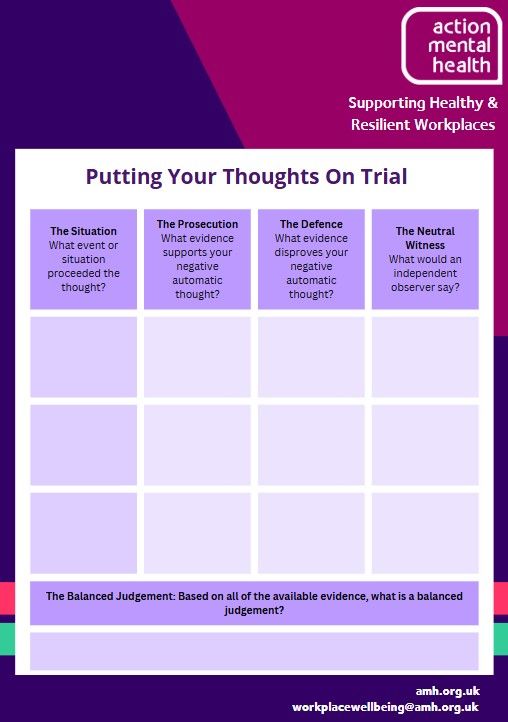Negative
Automatic Thoughts (NATs) are involuntary, habitual thoughts that can arise in
response to everyday situations. These thoughts are typically negative,
self-critical, or distorted and often occur without conscious awareness. Whilst
most people will experience NATs to some degree, when these thoughts are frequent,
persistent and unaddressed they can significantly impact a person’s mood,
stress levels, and overall mental well-being. Features of negative automatic
thoughts include:
- Quick and
Unconscious: NATs
happen spontaneously and without warning, usually without the individual’s
deliberate choice.
- Distorted
Thinking: These
thoughts are often based on faulty or exaggerated beliefs, such as
overgeneralization, catastrophizing, or black-and-white thinking.
- Self-Critical
or Pessimistic: NATs
tend to focus on the negative aspects of oneself, the world, or future outcomes.
- Emotionally
Charged: These thoughts
often trigger strong emotional reactions, such as anxiety, sadness, or
frustration.
Understanding types
of negative automatic thoughts can help us to begin to consciously recognise
and change this type of thinking. Common examples of negative automatic
thoughts include:
- Catastrophizing: Imagining the worst possible outcome,
no matter how unlikely.
Example: "If I make a mistake,
I’ll be fired."
- Overgeneralization: Drawing broad conclusions based on
limited evidence.
Example: "I didn’t get the job
I applied for so I’ll never succeed at anything."
- Black-and-White
Thinking: Viewing
situations in extremes, without considering middle ground.
Example: "If I’m not perfect,
I’m a failure."
- Mind Reading: Assuming you know what others are thinking,
usually in a negative light.
Example: "Everyone at the
meeting thinks I’m incompetent."
- Personalization: Taking responsibility for events
outside your control or blaming yourself.
Example: "It’s all my fault
that that pitch went badly”
- Discounting
the Positive: Ignoring
or undervaluing positive experiences or achievements.
Example: "That compliment
doesn’t count; they were just being nice."
No-one has the
ability to think positively 100% of the time. In fact, it’s perfectly natural
to experience negative automatic thoughts occasionally. However, if negative
thoughts are a frequent feature, they can start to impact your wellbeing, behaviour
and relationships. For example, if you are very prone to discounting the
positive, you may begin to notice that this NAT impacts your overall
self-esteem or that you struggle to trust positive feedback from others. When
we become aware of our NATs, we are taking the first step in allowing ourselves
to begin to construct healthier ways of thinking. Journaling is a great way to
notice patterns in your thinking and internal monologue. Begin by simply
writing down your thought processes. What triggered these thoughts? What was
the thought? Did this thinking impact your behaviour? How did you feel
afterwards?
In this
exercise, you will test the evidence for and against your negative automatic
thoughts. This exercise is presented in five parts:
- Start
by briefly outlining the situation that led to the negative automatic thought
- Then
put forth the case for the “prosecution” by presenting all evidence that
supports your negative interpretation. Try to focus on factual evidence, much
like in a real trial!
- You
will then present the evidence for the “defence”. The defence box provides
evidence that the negative automatic thought is not true.
- Then
try to think about what an impartial witness would say based on the available
evidence.
- Finally,
the “judgement” is a fair, balanced and justified conclusion based on the
evidence you have assessed.

When you find yourself with racing negative automatic thoughts, it can be easy to let them snowball. This exercise encourages you to slow down your thinking and anchor yourself in the present moment:
Acknowledge- your thoughts, memories and emotions
Physicalize- where are you feeling those thoughts and feelings in your body? Is it a lump in your throat? A tightness in your chest? A heaviness in your shoulders?
Engage- Shift your focus from your mind and body to the world around you. What can you see, hear, feel, taste and smell?



